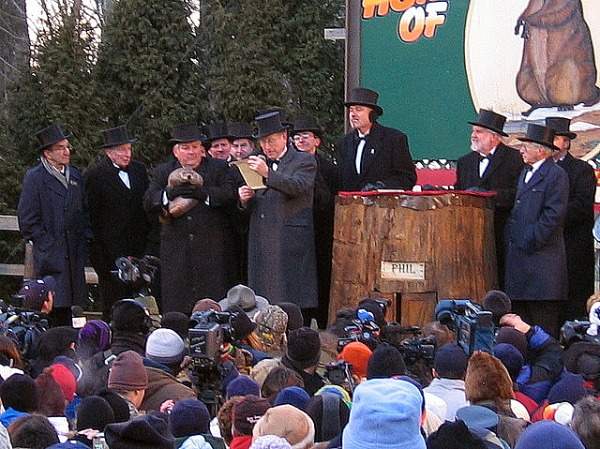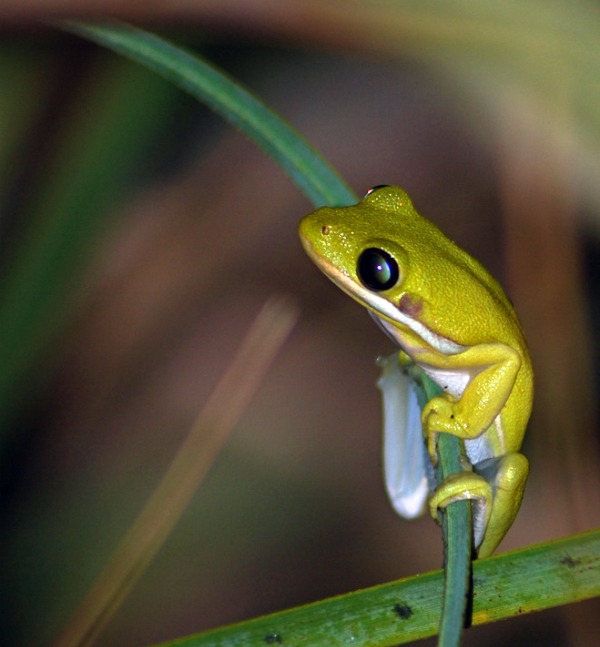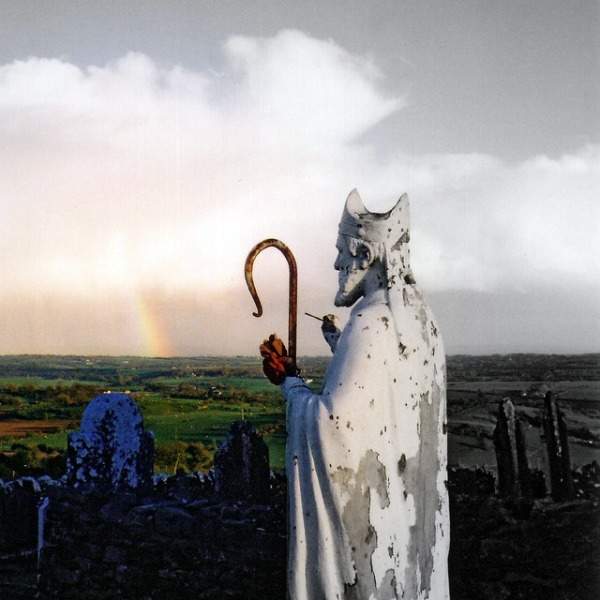The weather-predicting powers of the groundhog never sounded completely ridiculous to me until I was explaining the American tradition of Groundhog Day to an English friend during my semester abroad in Nottingham.
“You mean to tell me a furry creature pops out of a hole in the ground and you let its shadow tell you what the weather will be like?”
Yes, in fact, that’s exactly what we do.
Whether or not you believe the predictions, much hullabaloo surrounds the emergence of a particular groundhog in Pennsylvania from his cozy underground lair every February 2nd. Punxsutawney Phil, as the groundhog is known, has been pulled unceremoniously from his cozy abode in Punxsutawney, Pennsylvania the morning of each February 2nd in order to see if he casts a shadow. This has been going on since the mid-1800s (obviously there have been a few Phils over the years), and was made world famous by the film “Groundhog Day.”

It sounds nutty, I’ll grant you that. I said as much to my English friend. Thankfully, however, I’ve recently become aware that we’re not the only people who have a crazy-sounding method to predict the weather. The fact that a couple of the ones on this list are from the U.K. only makes me happier.
This isn’t an exhaustive list, but I hope it gives you an idea of the variety of weather-predicting tools out there. You may not feel tempted to get rid of your barometer or ignore your local weatherman, but at least you’ll be well-armed the next time an incredulous foreigner makes one of your holidays sound silly.
I tell you what, my English pal is going to be getting an email from me…
Please let me know if I’ve missed one, too, by leaving a note in the comments!
Bears
Although I sincerely doubt that anyone is dragging a bear out of its cave and hoisting it overhead on a stage for all to see, there are a couple of places where the animal with the weather-related clairvoyancy is a bear.

February 2nd in Serbia is known as Sretenje, and one of the traditions of Sretenje is that a bear will rise from its winter hibernation. Seeing its shadow allegedly frightens the bear into scurrying back into hibernation mode for another 40 days, meaning winter will be longer.
In Romania, this bear-watching tradition is called Stretenie, or Ziua Ursului (Day of the Bear), and it’s also on February 2nd. Hungary also keeps an eye out for shadows around bears on February 2nd.
Hedgehogs
While groundhogs somehow feel quite American to me (y’know, it’s that whole tumbleweeds and Wild West thing), the precursor to the groundhog was actually the hedgehog.

Germany‘s Candlemas tradition is that of a hedgehog who pops out of the ground on February 2nd. If he sees his shadow, he goes back underground for six more weeks and the Germans are stuck with a longer winter. It was this hedgehog-shadow-watching custom that people in mid-19th century Pennsylvania brought to their new home – they just swapped the hedgehog for a groundhog.
Hedgehogs were also seen as barometers in the United Kingdom, although it had more to do with wind patterns. Farmers in 18th century England were taught that they could tell which way the wind would blow by seeing how hedgehogs built their nests.
Frogs
Watching the shadows of hedgehogs clearly isn’t enough for Germans when it comes to forecasting the weather. Maybe they didn’t want the frogs to feel left out.

To see if rain was in the future, people in Germany (often kids) catch a green frog and put it in a glass jar with a cloth cover. Inside the jar with the frog, they place a small ladder (apparently tiny frog-sized ladders are commonplace in German households). The higher up the ladder the frog climbs, the nicer the weather is supposed to be. Frogs that stay at the bottom of the jar are said to predict rain.
Marmots
For most of the United States, checking in with our famous Punxsutawney Phil in Pennsylvania is close enough to call it good. But in Alaska, where groundhogs are scarce, they decided they needed their own weather-predicting animal.

In 2009, then-governor Sarah Palin signed a piece of legislation declaring February 2nd to officially be Marmot Day in Alaska. Other than the change of animal, the routine is the same – if the marmot sees its shadow, it’s six more weeks of winter. Which, in Alaska, I would guess is pretty par for the course.
Saints
As many animals as there are to predict the weather around the world, there are just as many saints whose feast days are important to weather watchers.

In the U.K., the weather on Saint Swithun’s Day (July 15th) is said to be the influencer for the 40 days that follow. For instance, if July 15 is rainy, the next 40 days will be rainy.
There are three such saints in France who are said to have a similar impact on the weather that follows their saints days – Saint Medard (June 8th) and Saints Gervase and Protais (June 19). In the Flemish part of Belgium, Saint Godelieve’s feast day (July 6th) is also said to predict the weather that comes after that day.
Existing Weather
Several countries have traditions that relate future weather conditions to what the weather is like on a specific day.

Several countries have traditions that relate future weather conditions to what the weather is like on a specific day.
In the U.K., Candlemas is also a weather-predicting day – but instead of watching for a hedgehog’s shadow they just use the weather on Candlemas (February 2nd) to predict what the rest of the winter will be like. Nice weather on February 2nd means the remainder of the winter will be worse, and vice versa.
If it rains on Germany’s Seven Sleepers Day (June 27th), popular belief is that the rest of the summer is going to be rainy – sun on June 27th means a sunny summer.
Some resources, in addition to the all-knowing Wikipedia – Weather Prediction Lore on Suite101, Weather Basics: Long Range Forecasting on ESPERE
photos, top to bottom, by: Aaron E. Silvers, nappent, nuubik, leftrightworld, Cecil Sanders, starbeard, anonmuc